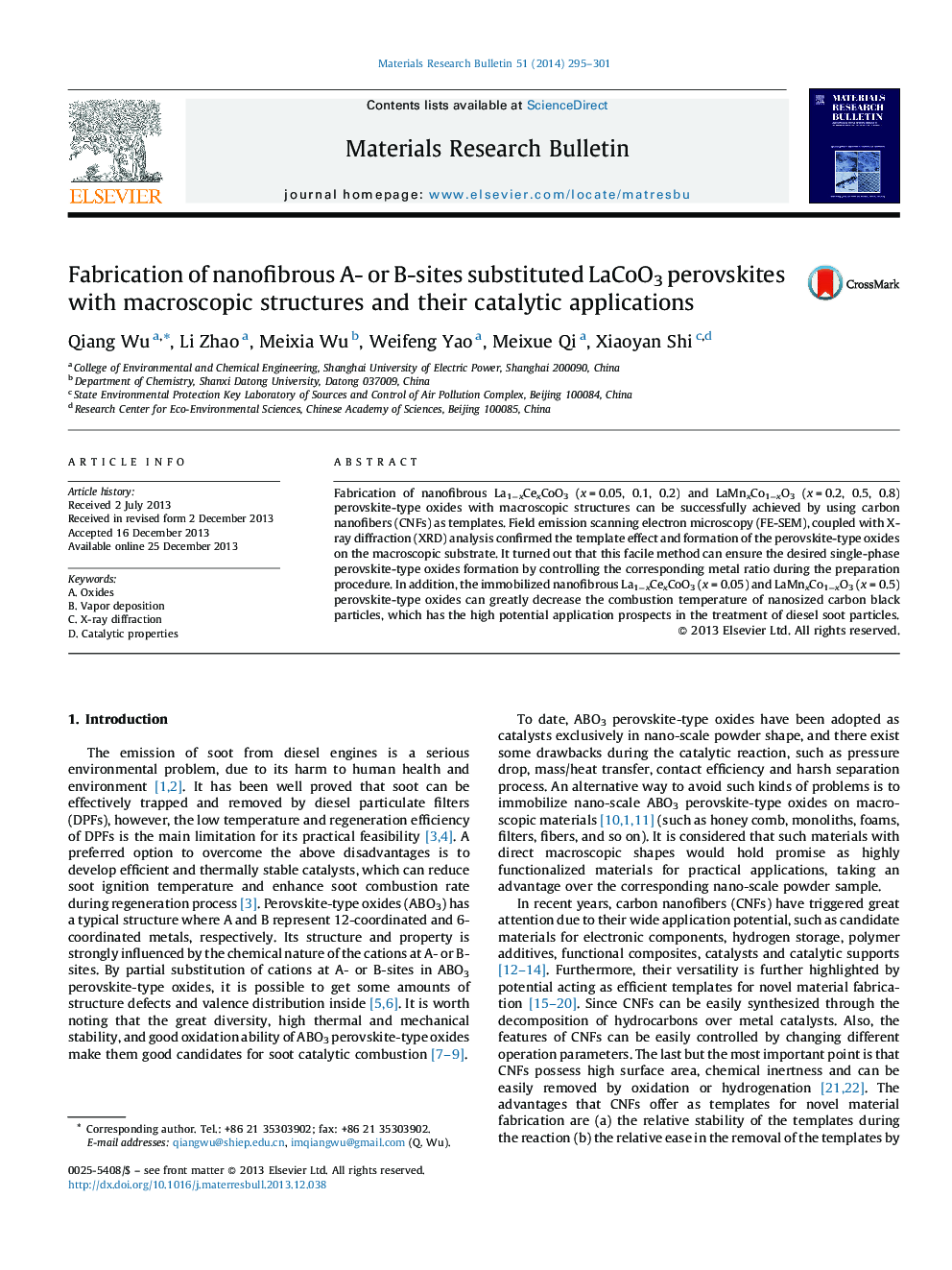| کد مقاله | کد نشریه | سال انتشار | مقاله انگلیسی | نسخه تمام متن |
|---|---|---|---|---|
| 1488202 | 1510724 | 2014 | 7 صفحه PDF | دانلود رایگان |

• Nanofibrous perovskites with macroscopic shapes were successfully obtained.
• CNFs template method used here is facile, effective and reproducible.
• This method might be applicable to other novel material fabrication.
• The obtained materials show superior catalytic activity in soot combustion.
Fabrication of nanofibrous La1−xCexCoO3 (x = 0.05, 0.1, 0.2) and LaMnxCo1−xO3 (x = 0.2, 0.5, 0.8) perovskite-type oxides with macroscopic structures can be successfully achieved by using carbon nanofibers (CNFs) as templates. Field emission scanning electron microscopy (FE-SEM), coupled with X-ray diffraction (XRD) analysis confirmed the template effect and formation of the perovskite-type oxides on the macroscopic substrate. It turned out that this facile method can ensure the desired single-phase perovskite-type oxides formation by controlling the corresponding metal ratio during the preparation procedure. In addition, the immobilized nanofibrous La1−xCexCoO3 (x = 0.05) and LaMnxCo1−xO3 (x = 0.5) perovskite-type oxides can greatly decrease the combustion temperature of nanosized carbon black particles, which has the high potential application prospects in the treatment of diesel soot particles.
Fabrication of nanofibrous La1−xCexCoO3 (x = 0.05, 0.1, 0.2) and LaMnxCo1−xO3 (x = 0.2, 0.5, 0.8) perovskite-type oxides with macroscopic structures can be successfully achieved by using carbon nanofibers (CNFs) as templates. Furthermore, their application for the combustion of carbon black (CB), which is a model of particulate matter exhausted from diesel engines, was demonstrated.Figure optionsDownload as PowerPoint slide
Journal: Materials Research Bulletin - Volume 51, March 2014, Pages 295–301